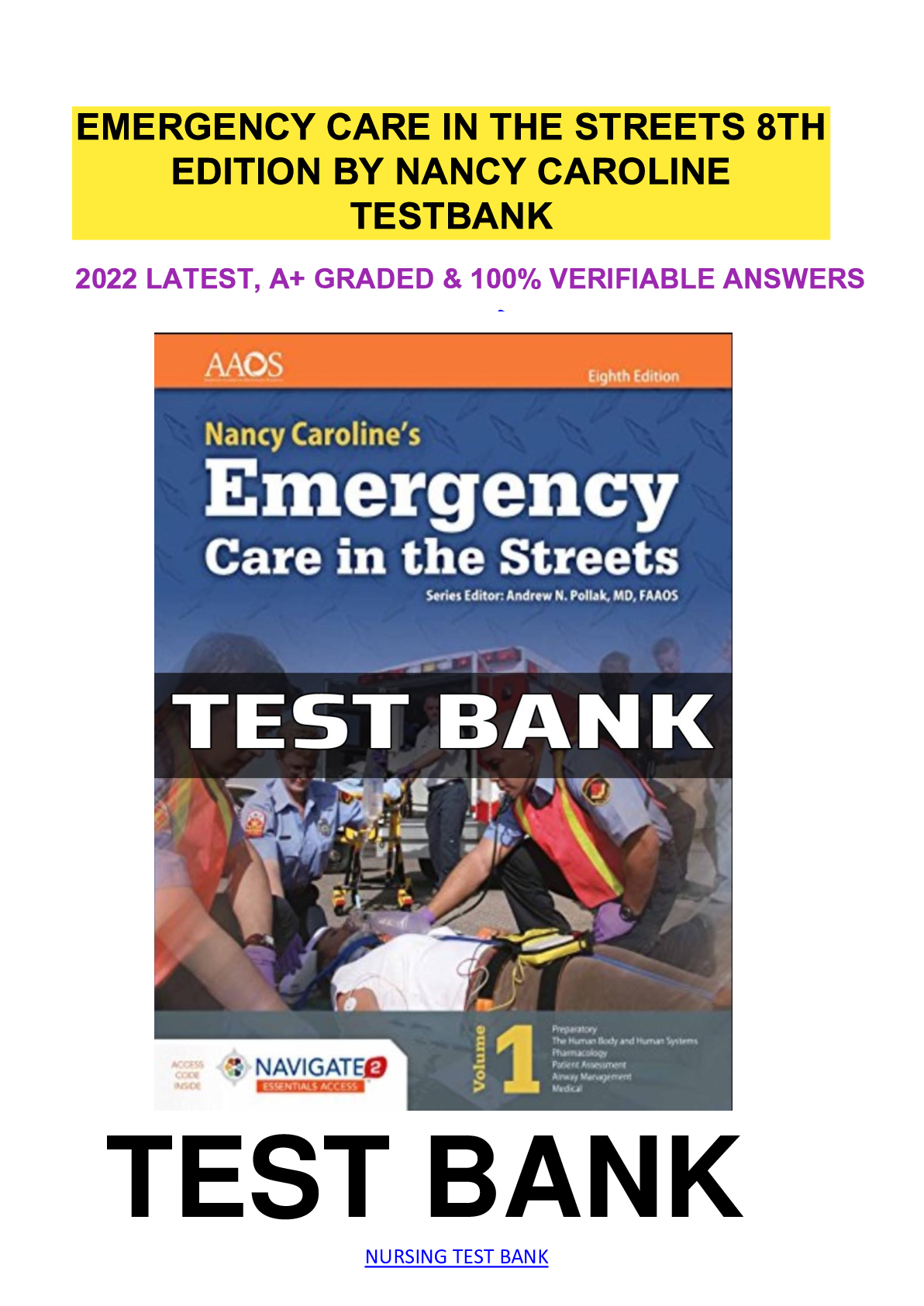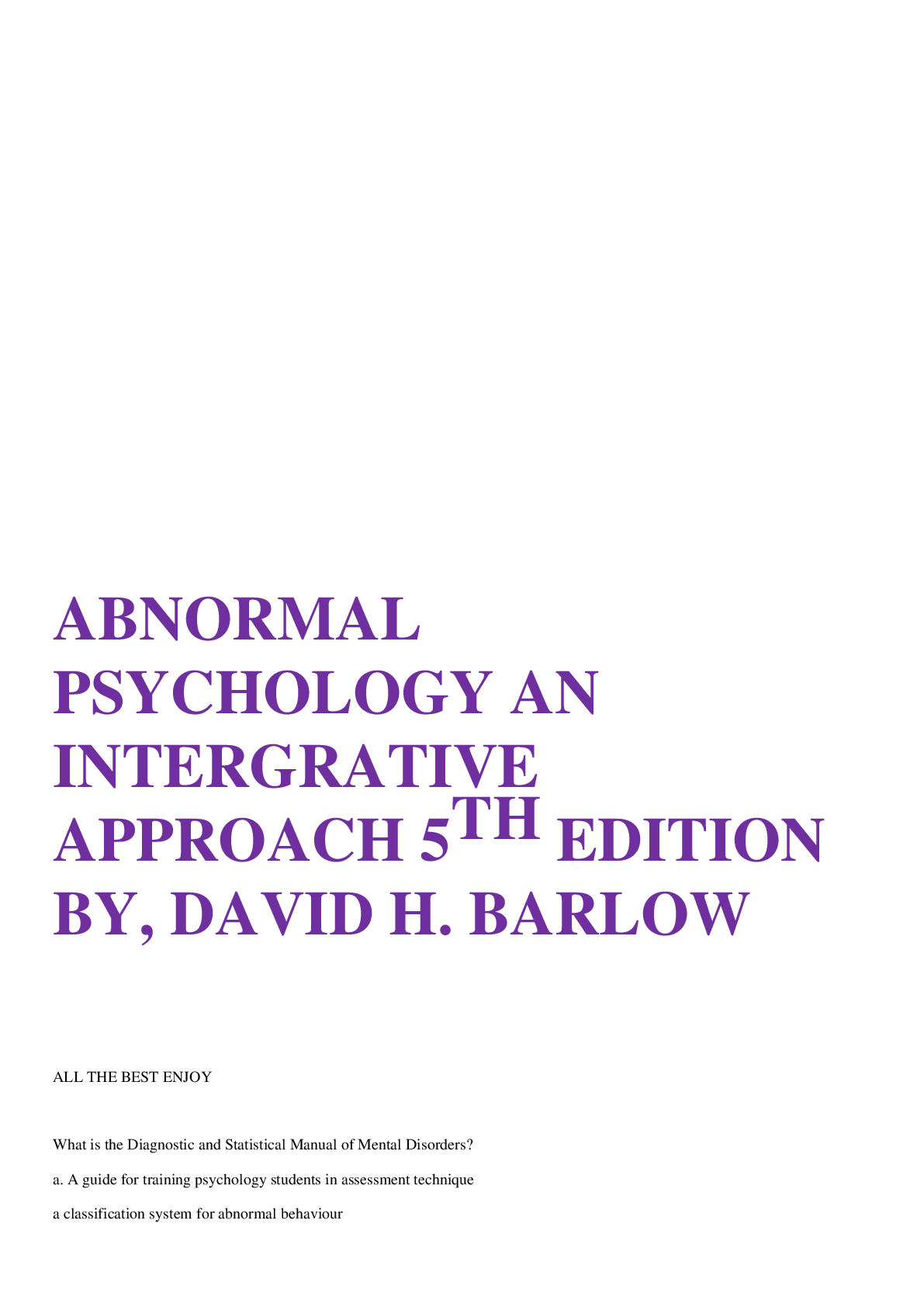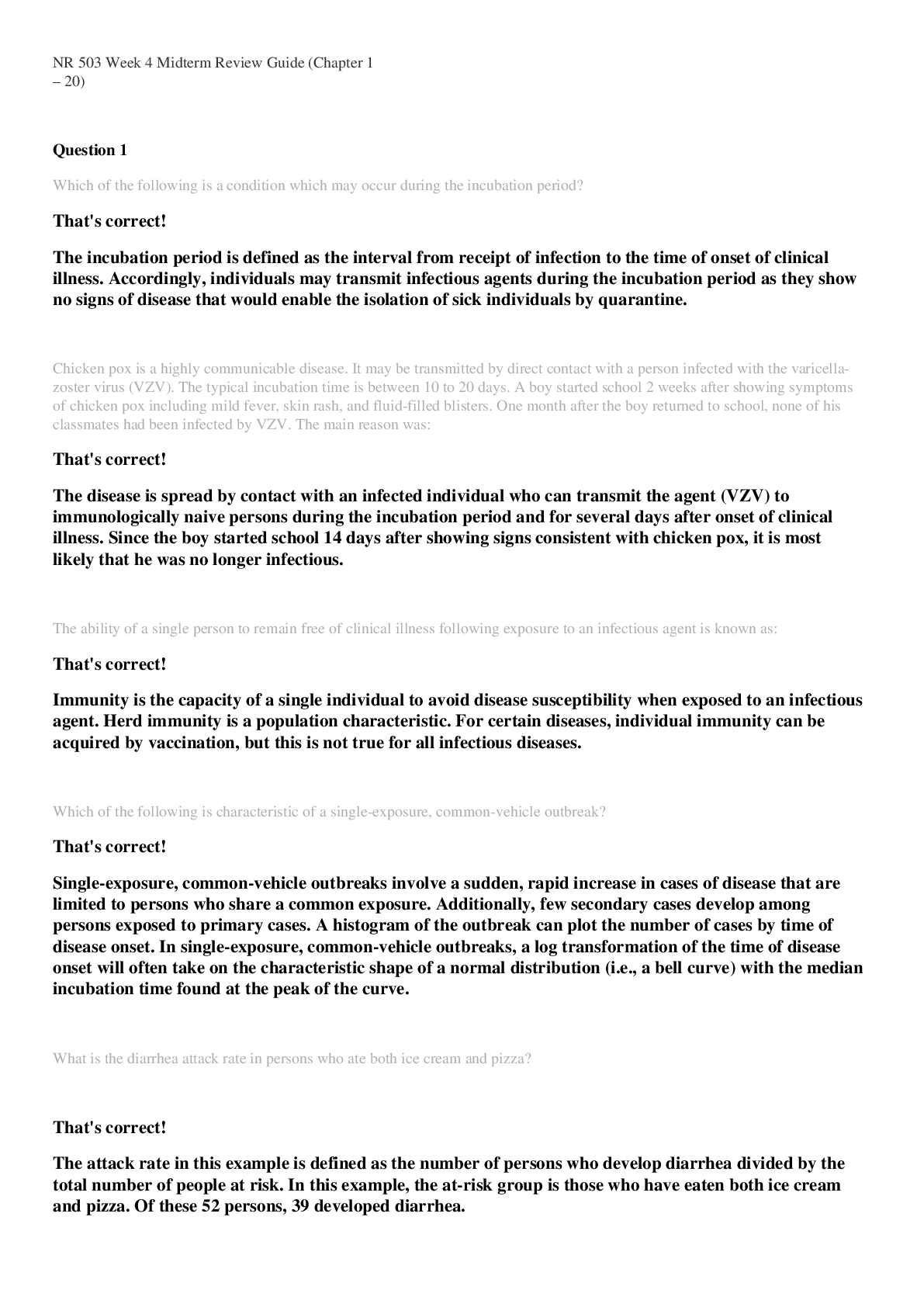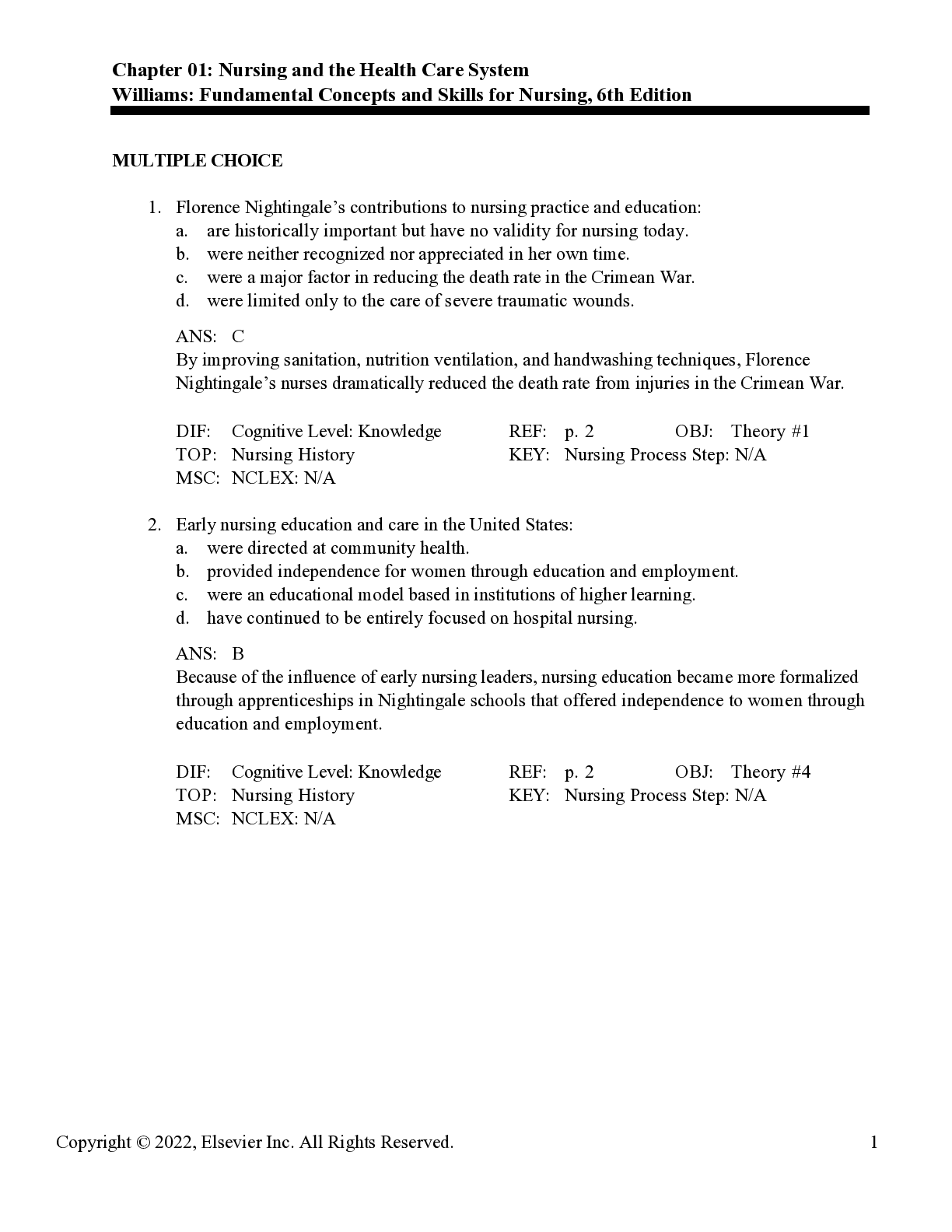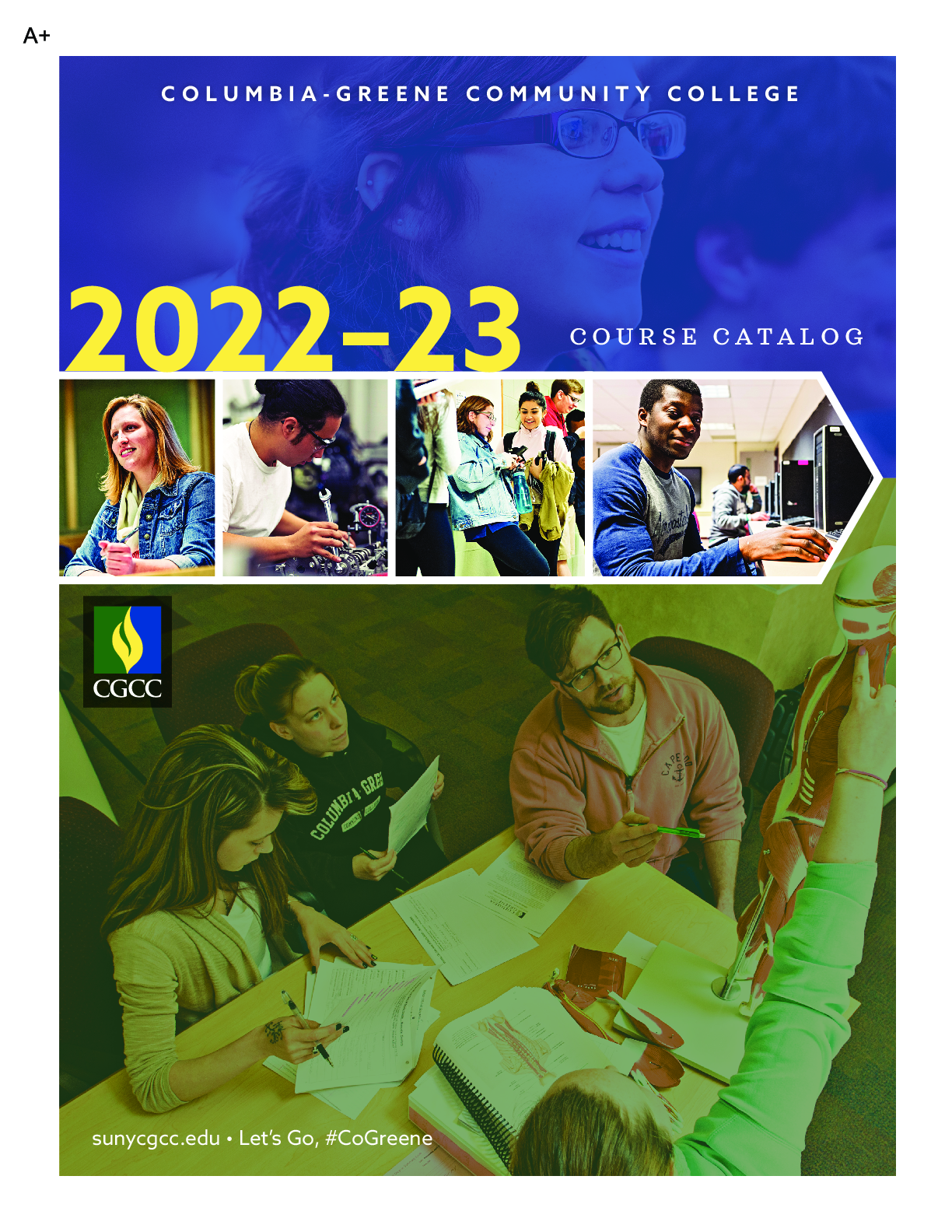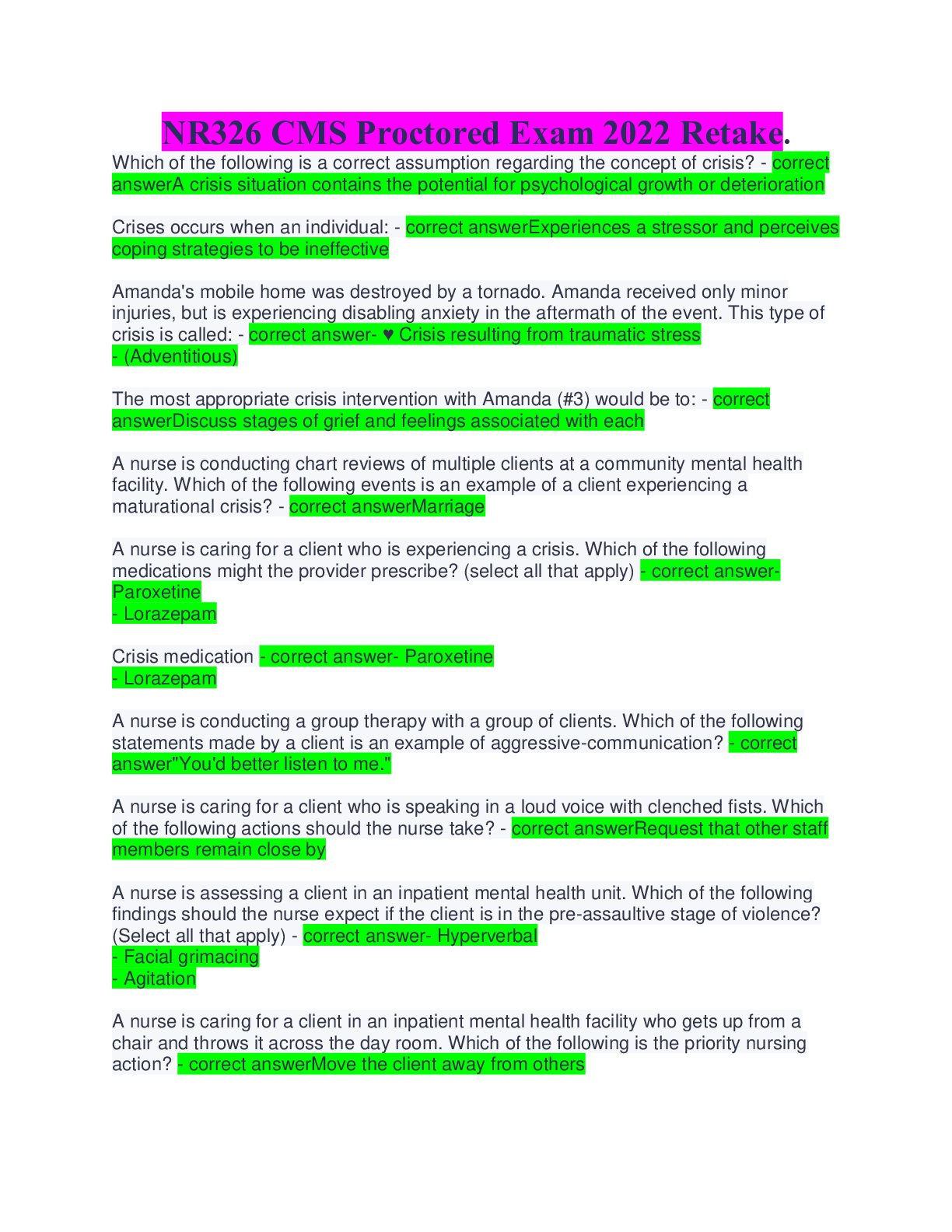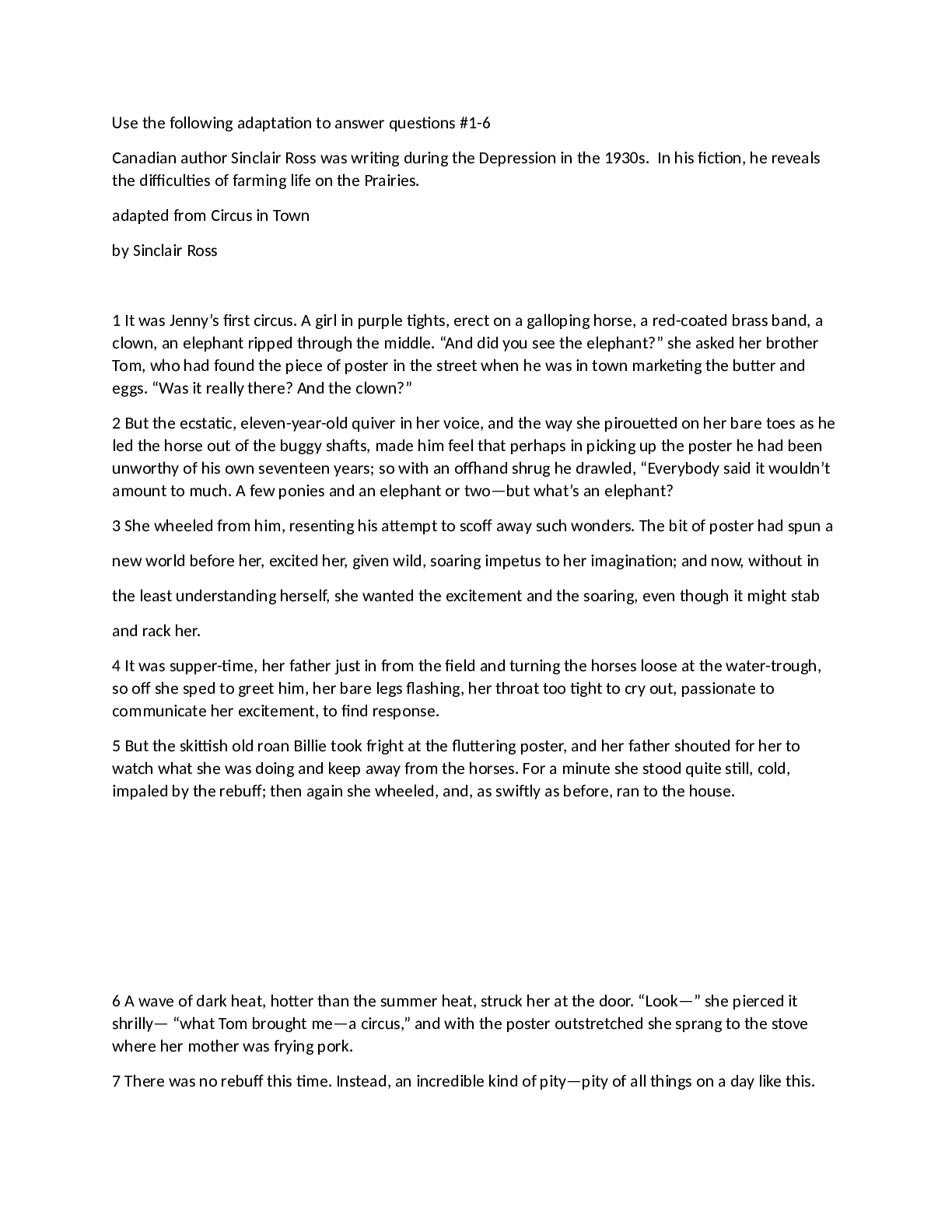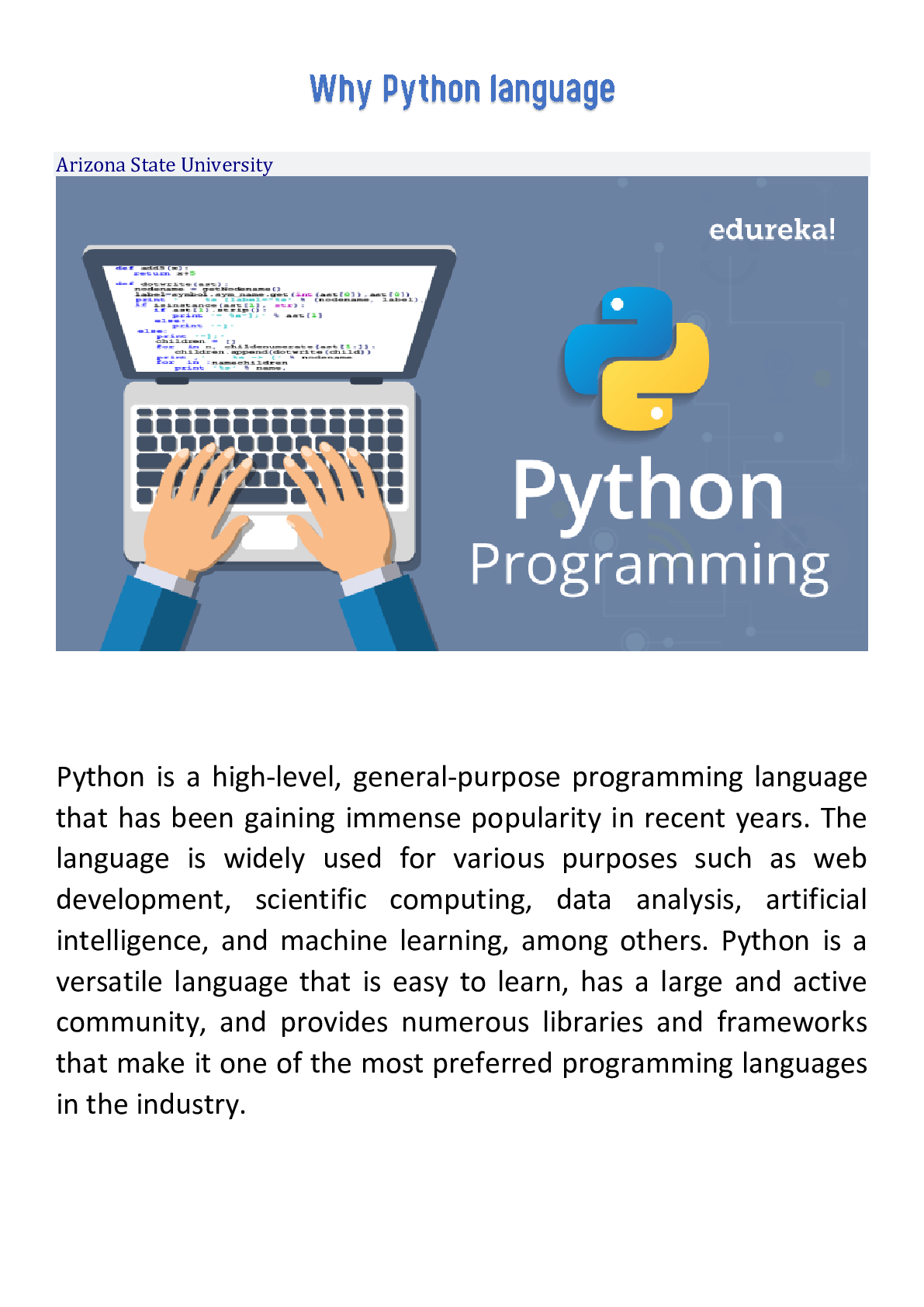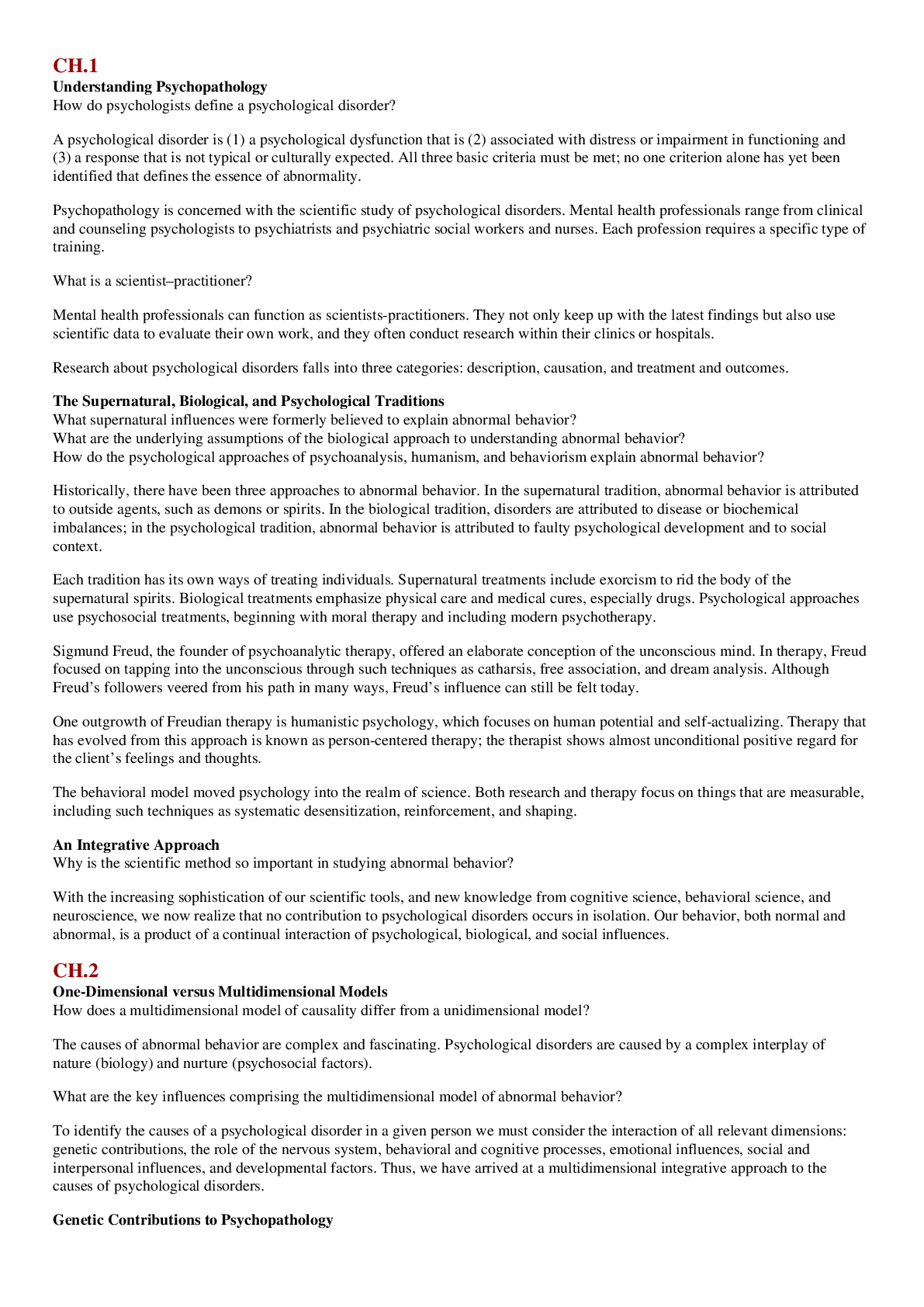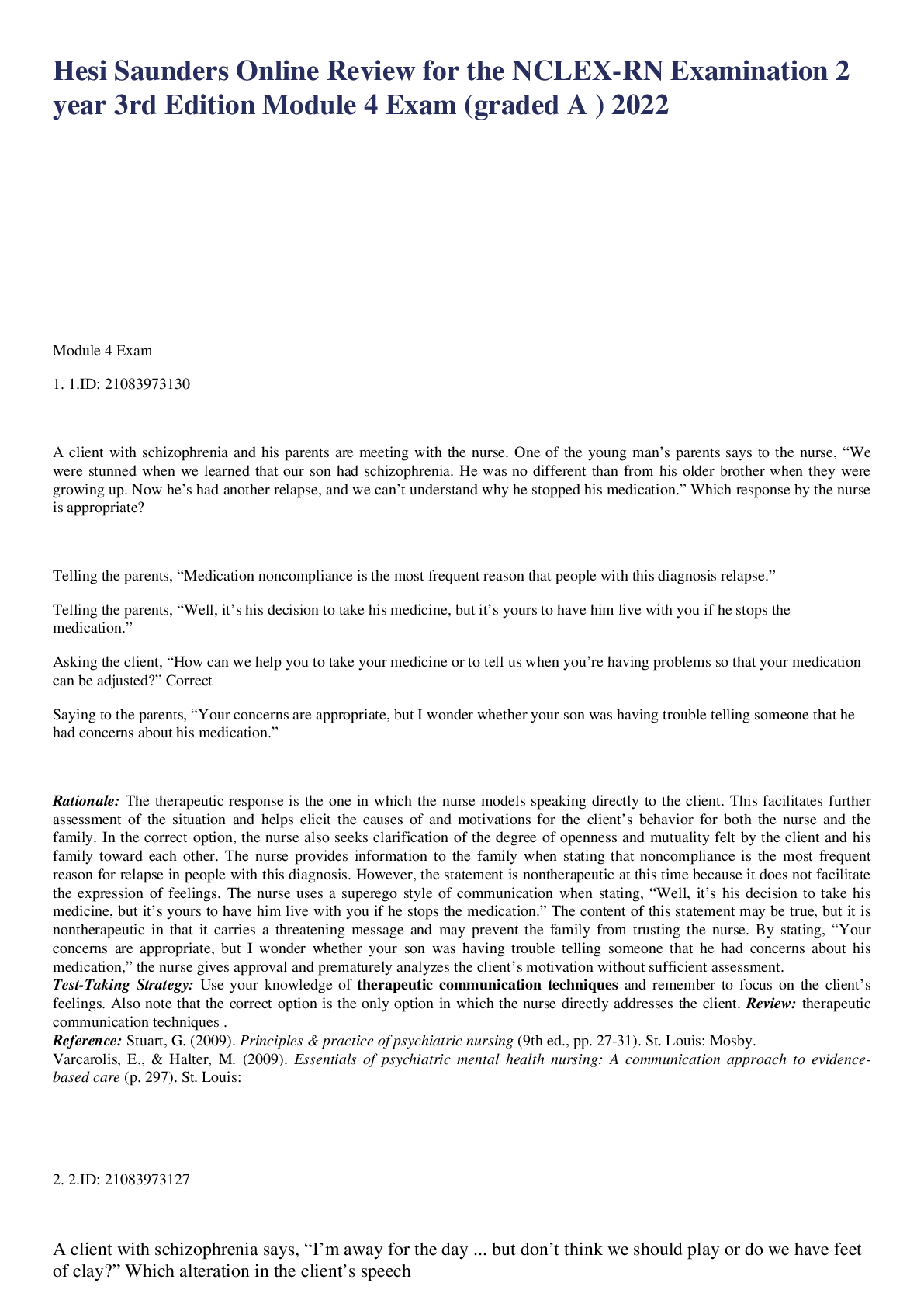NCLEX-RN > Book Review > NCLEX-PN®: POWER PRACTICE (All)
NCLEX-PN®: POWER PRACTICE
Document Content and Description Below
The content in this book has been reviewed and updated by the LearningExpress Team in 2019. Copyright © 2013 Learning Express, LLC. All rights reserved under International and Pan American Co... pyright Conventions. Published in the United States by LearningExpress, LLC, New York. Library of Congress Cataloging-in-Publication Data: NCLEX-PN power practice. p. ; cm. ISBN 978-1-57685-912-4 I. LearningExpress (Organization), publisher. [DNLM: 1. Nursing, Practical—United States—Examination Questions. WY 18.2] RT55 610.7306'93076—dc23 2013027021 Printed in the United States of America 9 8 7 6 5 4 3 2 1 First Edition ISBN-13: 978-1-57685-912-4 NCLEX-PN® is a registered trademark of the National Council of State Boards of Nursing (NCSBN), which neither sponsors nor endorses this product. CONTENTS CONTRIBUTORS vii CHAPTER 1 Introduction to the NCLEX-PN® 1 Overview of NCLEX-PN 2 Registering for the Exam 2 What to Expect at the Test Center 3 During the Test 3 What Skills Are Tested? 3 A Note on Guessing 5 Exam Results 6 CHAPTER 2 The LearningExpress Test Preparation System 7 Step 1: Get Information 8 Step 2: Conquer Test Anxiety 9 Step 3: Make a Plan 11 Step 4: Learn to Manage Your Time 12 Step 5: Learn to Use the Process of Elimination 12 Step 6: Reach Your Peak Performance Zone 14 Step 7: Make Final Preparations 19 Step 8: Make Your Preparations Count 19 CONTENTS CHAPTER 3 NCLEX-PN Practice Test 1 23 Questions 27 Answers 55 CHAPTER 4 NCLEX-PN Practice Test 2 93 Questions 97 Answers 123 v i CONTRIBUTORS Dr. Yvonne Weideman is an assistant professor of nursing at Duquesne University School of Nursing. Her areas of interest are the preparation of students for the NCLEX® exam and the use of innovative technology in the classroom to enhance learning. Dr. Weideman has recently developed a model for integrating theory and con- tent through the use of virtual technology entitled “The Virtual Pregnancy Model.” Dr. Alicia Culleiton is an assistant clinical professor at Duquesne University School of Nursing. She currently teaches doctoral level nursing courses as well as undergraduate NCLEX-RN® preparation courses. Dr. Culleiton earned her BSN from The Catholic University of America, her MSN in nursing administration and nursing education from Indiana University of Pennsylvania, and her doctorate degree from Chatham University. She is published in nursing and educational journals. Her clinical expertise is in emergency/trauma and critical-care nursing, with research interests including student remediation and NCLEX-RN® preparation. Karen Paraska, PhD, CRNP, is assistant professor of nursing at Duquesne University. She has taught a range of graduate nursing courses, including offerings in advanced practice nursing and research methods, as well as undergraduate courses, including NCLEX-RN® preparation courses. She is coauthor of several referred arti- cles, including “Cognitive impairment associated with adjuvant therapy in breast cancer” for the journal Psycho-Oncology. vi i INTRODUCTION TO THE NCLEX-PN® ongratulations! If you are reading this book, you have graduated or are about to graduate from an accredited licensed practical or vocational nurse program and are interested in preparing for the Practical/Vocational Nurses (NCLEX-PN®) examination, which will enable you to become a licensed practical nurse (the term used here for both licensed practical and vocational nurses). One of the most important ways to begin preparing for the NCLEX-PN® is to become familiar with the format of the exam, the process of registering for the exam, what to expect on test day, the subjects the exam covers, and so on. This chapter will help you get started. While the information in this chapter is current as of the date of publication, some details may change. For the most recent information, refer to the official National Council of State Boards of Nursing (NCSBN) NCLEX® website, www.ncsbn.org/nclex. INTRODUCTION TO THE NCLEX-PN® Overview of NCLEX-PN® NCLEX-PN® is a computer-based exam that tests the knowledge, skills, and abilities you’ll need to practice safely and effectively as an entry-level licensed practi- cal nurse (LPN). The test is administered in a com- puterized adaptive testing (CAT) format, which allows the computer testing program to evaluate your abilities more effectively and efficiently than more traditional approaches to testing. While the proce- dure the program uses is complex and will adapt to each individual’s abilities, the general principle is fairly simple. With each answer you record, the com- puter reassesses your competencies and continues to ask additional questions until it is virtually certain that your abilities are above or below the level required. Given the test’s adaptability, the number of questions it asks—anywhere from 85 to 205 items— is different for each individual. Of this number, 25 are pretest questions designed to help test producers develop new types of questions; these test questions are not considered in your final score. The exam is not divided into sections corresponding to content areas, though it is important that you understand what content areas are covered to help you prepare. There is a time limit of five hours, no matter what number of questions you are given. Registering for the Exam Registration for the NCLEX-PN® is a two-part pro-cess: applying for licensure with the board of nursing in the state or territory from which you are seeking your license, and registering for the exam with Pear-son VUE, which administers the test. It is advisable to start both phases at once, so that both can proceed simultaneously. You must meet all your nursing board’s require-ments for taking the NCLEX-PN® exam. (For a com-plete list of the boards of nursing and links to their websites, go to www.ncsbn.org/ contactbon.htm.) The nursing board will certify to Pearson VUE that you are eligible to sit for the exam. This results in your Authorization to Test (ATT) email. The ATT is valid for a time period determined by your board of nursing. This time frame cannot be extended. For this reason, it is important that you schedule your appointment for the exam as soon as possible after receiving your ATTemail. Step-by-step, the registration process looks like this, as outlined in the “2018 NCLEX® Examination Bulletin”: 1. Submit an application for licensure to the board of nursing where you wish to be licensed. 2. Meet all the board of nursing’s eligibility requirements to take the NCLEX®. 3. Register for the NCLEX® with Pearson VUE. 4. Receive Acknowledgement of Receipt of Regis- tration email from Pearson VUE. 5. The Board of Nursing makes you eligible to take the NCLEX® in the Pearson VUE system. 6. Receive Authorization to Test (ATT) email from Pearson VUE. 7. Schedule your exam with Pearson VUE. Source: “2018 NCLEX® Examination C a n d i d - at e Bulletin,” page 2; available at www.ncsbn.org/089900_2018_Bulletin_Proof2.pdf The non-refundable fee to register for the exam is $200. You must also pay fees associated with the licensure application required by your nursing board. The registration is valid for a 365-day period, during which the nursing board will establish your eligibility. If a candidate doesn’t meet the board’s eligibility requirements within that time period, the registra- tion fee is forfeited. Failing to appear at the scheduled examination time will also result in the forfeiture of your registra- tion fee and the invalidation of your ATT, unless you reschedule at least one full business day before your scheduled exam time. If you don’t pass the exam on INTRODUCTION TO THE NCLEX-PN® your first try, you can retest based on a minimum waiting period of 45 days—as determined by your state nursing board. What to Expect at the Test Center Plan to arrive at least 30 minutes before your test is scheduled to begin. Make sure to bring, in addition to your ATT letter, an acceptable form of personal identification (ID). The only IDs considered acceptable are a U.S. driver’s license (Department of Motor Vehicles- issued); U.S. state identification; passport; and U.S. military identification. For test centers outside of the United States, only a passport is acceptable. During the Test In addition to the ID you bring with you, other secure forms of identification will be taken during the check-in process, such as a digital signature and a palm vein scan. For further information on security procedures at the test site and personal identification requirements, including names, , refer to the “2018 NCLEX® Examination Candidate Bulletin” (www.ncsbn.org/089900_2018_Bulletin_Proof2.pdf). When you enter the testing room, the test administrator (TA) will give you an erasable note board and a marker to be used for note taking. If you need another note board during the test, you must raise your hand and ask the TA to provide you with one. An electronic calculator will be available during testing on your computer screen, for use, as needed during the exam. As mentioned, the time limit for the test is five hours. During this period, there are two optional breaks, one at two hours and another at three and one-half hours; the computer will inform you when these breaks start. You will also be allowed unsched- uled breaks, such as those to use the restroom, but all breaks, including those that are scheduled, count against test time. The testing environment is as standardized as possible to ensure that all candidates complete the exam under the same conditions. Strict controls, therefore, are in effect, such as the audio and video monitoring and recording the restriction against cell phones, pagers, fitness bands, and other electronic devices in the testing room, as well as other personal items such as coats, hats, scarves, gloves, bags, purses, wallets, and watches. See page 9 in the “2018 NCLEX® Examination Candidate Bulletin,” available at www.ncsbn.org/089900_2018_Bulletin_Proof2.pdf. What Skills Are Tested? During your nursing program, much of your study was focused on specific areas of knowledge—such as anatomy and physiology and diseases and patholo- gies—needed to work as a licensed practical nurse. The key to being a safe and effective LPN, however, is the application of that knowledge. Therefore, the questions—mostly multiple choice, though some are in alternative formats—are designed to test whether you can apply that knowledge in the safe and effective care of clients as an entry-level LPN. INTRODUCTION TO THE NCLEX-PN® The exam, therefore, measures your understanding of the needs of clients you may encounter in practice, as well as your comprehension of the integrated processes critical in addressing these needs. Client Needs As mentioned, client needs compose the basic frame- work for the test plan. Client needs are broken down into four main categories, two of which have subcat- egories, as is shown in the following table. care is delivered, and the ways that PNs must work to protect clients and healthcare personnel. The content measured in this category include, but are not limited to, advance directives, advo- cacy, informed consent, establishment of priori- ties, and continuity of care. ■ Safe and Effective Care Environment: Safety and Infection Control. This content area addresses the ways in which PNs should work with the rest of the patient care team to protect both clients and healthcare workers from health and environmental hazards. The content measured in this category includes, but is not limited to, accident/error/injury prevention; handling hazardous and infectious CLIENT NEEDS CATEGORIES Health Promotion and PERCENTAGE OF ITEMS IN EACH CATEGORY materials; safe use of equipment; and use of restraints and safety devices. ■ Health Promotion and Maintenance. This content area addresses the ways in which PNs should work to incorporate knowledge of growth and development principles and prevention/early-detection strategies into the care of their clients. The content measured in Maintenance 6–12% Physiological Integrity this category includes, but is not limited to, aging process, ante/intra/postpartum and newborn care, developmental stages and transitions, health promotion/disease prevention, lifestyle choices, and Basic Care and Comfort Pharmacological Therapies Reduction of Risk Potential 7–13% 10–16% 9–15% data collection techniques. ■ Psychosocial Integrity. This content area addresses Physiological Adaptation 7–13% Source: “2018 NCLEX® Examination Candidate Bulletin,” page 14; available at www.ncsbn.org/089900_2018_Bulletin_Proof2.pdf. These content areas cover the full range of ways that RNs are expected to attend to their clients’ needs: ■ Safe and Effective Care Environment: Coordinated Care. This content area addresses the ways in which the practical nurse should work with the rest of the patient care team to help enhance the safety and effectiveness of the setting in which the ways in which PNs should assist in sustain-ing and enhancing the emotional, mental, and social well-being of clients as they undergo events causing stress, as well as of clients dealing with acute or long-term mental health events. The content mea- sured in this category includes, but is not limited to, abuse/neglect, chemical and other dependencies, crisis intervention, end-of-life care, grief and loss, mental health concepts, sensory and perceptual changes, and therapeutic communications and environments. ■ Physiological Integrity: Basic Care and Comfort. This content area addresses the ways in which PNs should work to provide comfort to clients, INTRODUCTION TO THE NCLEX-PN® and assist clients in performing activities and meeting expectations of daily living. The content measured in this category includes, but is not limited to, assistive devices, elimination, mobility and immobility, nutrition and oral hydration, and rest and sleep. ■ Physiological Integrity: Pharmacological Therapies. This content area addresses the ways in which PNs work to provide safe and effective care relating to the administration of medication, and the monitoring of clients receiving parenteral therapies. The content measured in this category includes, but is not limited to, adverse effects/ contraindications/side effects/interactions, dosage calculation, expected actions/outcomes, pharmacological pain management,and medication administration. ■ Physiological Integrity: Reduction of Risk Potential. This content area addresses the ways in which PNs work to reduce the likelihood of complications or problems that arise due to existing conditions, procedures, and treatments. The content measured in this category includes, but is not limited to, changes/abnormalities in vital signs, diagnostic tests, laboratory values, potential for complications from diagnostic and surgical procedures, and potential changes in body systems (such as cardiovascular, endocrine, gastroenterological, integumentary, musculoskeletal, and neurologic). ■ Physiological Integrity: Physiological Adaptation. This content area addresses the ways in which PNs work to help in the provision of care for patients with acute, chronic, or life-threatening physical conditions. The skills measured in this content area include, but are not limited to, alterations in body systems, fluid and electrolyte imbalances, medical emergencies, basic pathophysiology, and unexpected response to therapies. For a more complete explanation and list of examples in each client need category, refer to the the most recent version of the “2017 NCLEX-PN Detailed Test Plan,” available at www.ncsbn.org/ PN_Det_Test_Plan_2017.pdf. Integrated Processes Integrated processes critical to the practice of nursing are also addressed in the questions on the NCLEX-PN® exam. These processes include all the methodologies employed by PNs in entry-level positions to address their clients’ needs. As described in the “2017 NCLEX-PN Detailed Test Plan (available at www.ncsbn.org/ PN_Det_Test_Plan_2017.pdf, they include: ■ Clinical Problem-Solving Process—a scientific approach to client care that includes data collec- tion, planning, implementation, and evaluation. ■ Caring—interaction of the practical/vocational nurse and client in an atmosphere of mutual respect and trust . . . [providing] support and compassion to help achieve desired therapeutic outcomes. ■ Communication and Documentation—verbal and nonverbal interactions between the practical/ vocational nurse and the client, as well as other members of the healthcare team . . . are validated in written and/or electronic records that reflect stan-dards of practice and accountability in the provision of care. ■ Teaching and Learning—facilitation of the acqui- sition of knowledge, skills, and attitudes to assist in promoting a change in behavior. A Note on Guessing Fast guessing may result in a drastically lowered score. In typical paper-and-pencil tests, and even some administered by a computer, unanswered items are marked wrong. But due to the nature of computer adaptive testing, this strategy is ill-advised, since it will result in the computer program giving candidates INTRODUCTION TO THE NCLEX-PN® easier items, which they may also get wrong if they are guessing and running short on time. Thus, rapid guessing should be avoided. You should simply maintain a steady pace— allotting approximately one to two minutes on each item. Stay focused and carefully read each item before answering. Exam Results Examination results are sent by the board of nursing to the candidate up to six weeks after the test (this time frame may vary depending on the BON). If you haven’t received them after six weeks, you should contact your board of nursing, not Pearson VUE. Unofficial results are available within 48 hours through the quick results service (on the NLCLEX Candidate website at www.pearsonvue.com/nclex) for a small fee, if your board of nursing participates in the program. To ensure quality and accuracy, the results are scored twice—once by the computer and a second time after the computer results are transmitted to Pearson VUE. Even though the computer obtains the candidate’s results, this information is never available to the test center’s staff. If you fail the exam, you will receive a Candidate Performance Report (CPR) from your nursing board. In addition to notifying the candidate of the unac- ceptable performance on the test, the CPR includes information about the number of items administered and the candidate’s relative strengths and weaknesses. This information should help guide you in your preparation for retaking the exam. As mentioned, the retake waiting period depends on your board of nursing, and you will not be allowed to test earlier than 45 days after the last exam attempt. THE LEARNINGEXPRESS TEST PREPARATION SYSTEM t takes significant preparation to score well on any exam, and NCLEX-PN® is no exception. The Learning- Express Test Preparation System, developed by experts exclusively for LearningExpress, offers a number of strategies designed to facilitate the development of the skills, disciplines, and attitudes necessary for success. Preparing for and attaining a passing score on the NCLEX-PN® exam requires surmounting an assort- ment of obstacles. While some may prove more troublesome than others, all of them carry the potential to hinder your performance, and negatively affect your scores. Here are some examples: ■ lack of familiarity with the exam format ■ paralyzing test anxiety ■ leaving preparation to the last minute ■ not preparing at all THE LEARNINGEXPRESS TEST PREPARATION SYSTEM ■ failure to develop vital test-taking skills: ■ effectively pacing through an exam ■ using the process of elimination to answer questions accurately ■ knowing when and how to guess ■ mental and/or physical fatigue ■ Test day blunders: ■ arriving late at the testing facility ■ taking the exam on an empty stomach ■ not accounting for fluctuations in temperature at the testing facility The common thread among these obstacles is control. While a host of pressing, unanticipated, and sometimes unavoidable difficulties may frustrate your preparation, there remain some proven, effec- tive strategies for placing yourself in the best possi- ble position on exam day. These strategies can significantly improve your level of comfort with the exam, offering you not only the confidence you’ll need, but also, and perhaps most importantly, a higher test score. The LearningExpress Test Preparation System helps to put you in greater control. Separated into nine steps, the system heightens your confidence level by helping you understand both the exam and your own particular set of test-taking strengths and weak- nesses. It helps you structure a study plan, practice a number of effective test-taking skills, and avoid men- tal and physical fatigue on exam day. Each step is accompanied by an activity. While the following list suggests an approxi- mate time for the completion of each step, these are only guidelines for your initial introduction. The reg- ular practice of a number of them may require a more substantial time commitment. It may also be neces- sary and helpful to return to one or more of them throughout the course of your preparation. Step 1. Get information. 1 hour Step 2. Conquer test anxiety. 20 minutes Step 3. Make a plan. 20 minutes Step 4. Learn to manage your time. 10 minutes Step 5. Learn to use the process of elimination. 20 minutes Step 6. Reach your peak performance zone. 10 minutes Step 7. Make final preparations. 10 minutes Step 8. Make your preparations count. 10 minutes Total 2 hours, 30 minutes We estimate that working through the entire system will take you approximately three hours. It’s perfectly okay if you work at a faster or slower pace. It’s up to you to decide whether you should set aside a whole afternoon or evening to work through the LearningExpress Test Preparation System in one sit- ting, or break it up and do just one or two steps a day for the next several days. Step 1: Get Information Time to complete: 1 hour Activities: Read the introduction to this book. Knowing more about an exam can often make it appear less daunting. The first step in the Learning- Express Test Preparation System is to determine everything you can about the type of information you will be expected to know on the NCLEX-PN®, as well as how your knowledge will be assessed. THE LEARNINGEXPRESS TEST PREPARATION SYSTEM What You Should Find Out Knowing the details will help you study efficiently and help you feel a sense of control. Here’s a list of things you might want to find out: ■ What skills are tested? ■ How many sections are on the exam? ■ How many questions are in each section? ■ How much time is allotted for each section? ■ How is the exam scored, and is there a penalty for guessing/wrong answers? ■ Is the test computerized or will you have an exam booklet? ■ Will you be given scratch paper to write on? You will find answers to these questions in Chap- ter 1 of this book and on the NCSBN’s NCLEX-PN® website, www.ncsbn.org. Step 2: Conquer Test Anxiety Time to complete: 20 minutes Activity: Take the Test Stress Quiz. Now that you know what’s on the test, the next step is to address one of the biggest obstacles to success: test anxiety. Test anxiety may not only impair your per- formance on the exam itself, but it can also keep you from preparing properly. In Step 2, you will learn stress management techniques that will help you suc- ceed on your exam. Practicing these techniques as you work through the activities in this book will help them become second nature to you by exam day. Combating Test Anxiety A little test anxiety is a good thing. Everyone gets ner- vous before a big exam—and if that nervousness motivates you to prepare thoroughly, so much the better. Many athletes report pregame jitters, which they are able to harness to help them perform at their peak. Stop here and answer the questions on the Test Stress Quiz that follows to determine your level of test anxiety. Stress Management before the Exam If you feel your level of anxiety is getting the best of you in the weeks before the exam, here are things you can do to bring the level down: ■ Prepare. There’s nothing like knowing what to expect to put you in control of test anxiety. That’s why you’re reading this book. Use it faithfully, and you will be ready on test day. ■ Practice self-confidence. A positive attitude is a great way to combat test anxiety. Stand in front of the mirror and say to your reflection, “I’m pre- pared. I’m confident. I’m going to ace this exam. I know I can do it.” As soon as negative thoughts creep in, drown them out with these positive affirmations. If you hear them often enough, and you use the LearningExpress method to study for NCLEX-PN®, they will be true. ■ Fight negative messages. Every time someone talks to you about how hard the exam is or says it’s difficult to pass, think about your self-confidence messages. If the someone with the negative mes- sages is you—you’re telling yourself you don’t do well on exams, that you just can’t do this—don’t listen. Repeat self-confidence messages. ■ Visualize. Visualizing success can help make it happen, and it reminds you of why you’re doing all this work in preparing for the exam. Imagine yourself in your first day of classes or beginning the first day of your dream job. ■ Exercise. Physical activity helps calm your body and focus your mind. Besides, being in good physical shape can actually help you do well on the exam. Go for a run, lift weights, go swimming—and exercise regularly. You need to worry about test anxiety only if it is extreme enough to impair your performance. The following questionnaire provides a diagnosis of your level of test anxiety. In the blank before each statement, write the number that most accurately describes your experience. 0 = Never 1 = Once or twice 2 = Sometimes 3 = Often I have gotten so nervous before an exam that I simply put down the books and didn’t study for it. I have experienced disabling physical symptoms such as vomiting and severe headaches because I was nervous about an exam. I have simply not showed up for an exam because I was scared to take it. I have experienced dizziness and disorientation while taking an exam. I have had trouble filling in the little circles because my hands were shaking too hard. I have failed an exam because I was too nervous to complete it. Total: Add up the numbers in the blanks. Your Test Stress Score Here are the steps you should take, depending on your score. If you scored: ■ Below 3, your level of test anxiety is nothing to worry about; it’s probably just enough to give you that extra edge. ■ Between 3 and 6, your test anxiety may be enough to impair your performance, and you should practice the stress-management techniques in this section to try to bring your test anxiety down to manageable levels. ■ Above 6, your level of test anxiety is a serious concern. In addition to practicing the stress management techniques listed in this section, you may want to seek additional, personal help. Call your community college and ask for the academic counselor or ask the counselor at your nursing school. Tell the coun- selor that you have a level of test anxiety that sometimes keeps you from being able to take the exam. The counselor may be willing to help you or may suggest someone else you should talk to. 1 0 THE LEARNINGEXPRESS TEST PREPARATION SYSTEM Stress Management on Test Day There are several ways you can bring down your level of test stress and anxiety on test day. They’ll work best if you practice them in the weeks before the exam, so you know which ones work best for you. ■ Breathe deeply. Take a deep breath in while you count to five. Hold it for a count of one, and then let it out on a count of five. Repeat several times. ■ Move your body. Try rolling your head in a circle. Rotate your shoulders. Shake your hands from the wrist. ■ Visualize again. Think of the place where you are most relaxed: lying on the beach in the sun, walk- ing through the park, or wherever relaxes you. Now, close your eyes and imagine you’re actually there. If you practice in advance, you will find that you need only a few seconds of this exercise to experience a significant increase in your sense of relaxation and well-being. When anxiety threatens to overwhelm you dur- ing the test, there are still things you can do to man- age your stress level: ■ Repeat your self-confidence messages. You should have them memorized by now. Say them quietly to yourself, and believe them! ■ Visualize one more time. This time, visualize yourself moving smoothly and quickly through the exam, answering every question correctly, and finishing just before time is up. Like most visual- ization techniques, this one works best if you’ve practiced it ahead of time. ■ Find an easy question. Skim over the questions until you find an easy one, and then answer it. Getting even one question answered correctly gets you into the test-taking groove. ■ Take a mental break. Everyone loses concentra- tion once in a while during a long exam. It’s nor- mal, so you shouldn’t worry about it. Instead, accept what has happened. Say to yourself, “Hey, I lost it there for a minute. My brain is taking a break.” Close your eyes and do some deep breath- ing for a few seconds. Then go back to work. Try these techniques ahead of time and see whether they work for you! Step 3: Make a Plan Time to complete: 20 minutes Activity: Construct a study plan. There is no substitute for careful preparation and practice over time. So the most important thing you can do to better prepare yourself for your exam is to create a study plan or schedule and then follow it. This will help you avoid cramming at the last minute, which is an ineffective study technique that will only add to your anxiety. Once you make your plan, make a commit- ment to follow it. Set aside at least 30 minutes every day for studying and practice. This will do more good than two hours crammed into a Saturday. If you have months before the test, you’re lucky. Don’t put off your studying until the week before. Start now. Even 10 minutes on weekdays, with half an hour or more on weekends, can make a big differ- ence in your score. 1 1 THE LEARNINGEXPRESS TEST PREPARATION SYSTEM Step 4: Learn to Manage Your Time Time to complete: 10 minutes to read, many hours of practice Activities: Practice these strategies as you take the sample exams. Steps 4, 5, and 6 of the LearningExpress Test Prepara- tion System put you in charge of your NCLEX-PN® experience by showing you test-taking strategies that work. Practice these strategies as you take the practice exams in this book and online. Then, you will be ready to use them on test day. First, you will take control of your time on NCLEX-PN®. Start by understanding the format of the test. Refer to Chapter 1 to review this informa- tion; in particular, make sure you understand the way the computerized adaptive testing (CAT) works. You will want to practice using your time wisely on the practice tests, while trying to avoid making mistakes while working quickly. ■ Listen carefully to directions. By the time you get to the test, you should know how it works. But listen carefully in case something has changed. ■ Pace yourself. Glance at your watch every few minutes to ensure that you are not taking much more than one to two minutes on each question. ■ Keep moving. Don’t spend too much time on one question. If you don’t know the answer, skip the question and move on. Mark the question for review and come back to it later, if possible. ■ Don’t rush. You should keep moving, but rushing won’t help. Try to keep calm and work methodi- cally and quickly. Step 5: Learn to Use the Process of Elimination Time to complete: 20 minutes Activity: Complete worksheet on the process of elimination. After time management, the next most important tool for taking control of your test is using the process of elimination wisely. It’s standard test-taking wisdom that you should always read all the answer choices before choosing your answer. This helps you find the right answer by eliminating wrong answer choices. Consider the following question. Although it is not the type of question you will see on NCLEX-PN®, the mental process that you use will be the same. Sentence 6: I would like to be considered for the assistant manager position in your com- pany my previous work experience is a good match for the job requirements posted. Which correction should be made to sentence 6? a. Insert Although before I. b. Insert a question mark after company. c. Insert a semicolon and however before my. d. Insert a period after company and capitalize my. e. No corrections are necessary. If you happen to know that sentence 6 is a run-on sentence, and you know how to correct it, you don’t need to use the process of elimination. But let’s assume that, like some people, you don’t. So, you look at the answer choices. Although sure doesn’t sound like a good choice, because it would change the mean- ing of the sentence. So, you eliminate choice a, and now you only have four answer choices to deal with. 1 2 THE LEARNINGEXPRESS TEST PREPARATION SYSTEM Write a on your note board with an X through or beside it. Move on to the other answer choices. If you know that the first part of the sentence does not ask a question, you can eliminate choice b as a possible answer. Write b on your note board with an X through or beside it. Choice c, inserting a semico- lon, could create a pause in an otherwise long sen- tence, but inserting the word however might not be correct. If you’re not sure whether this answer is cor- rect, write c on your note board with a question mark beside it, meaning “well, maybe.” Choice d would separate a very long sentence into two shorter sentences, and it would not change the meaning. It could work, so write d on your note board with a check mark beside it, meaning “good answer.” Choice e means that the sentence is fine like it is and doesn’t need any changes. The sentence could make sense as it is, but it is definitely long. Is this the best way to write the sentence? If you’re not sure, write e on your note board with a question mark beside it. Now, your note board looks like this: X a. X b. ? c. ✓ d. ? e. You’ve got just one check mark, for a good answer, d. If you’re pressed for time, you should sim- ply select choice d. If you’ve got the time to be extra careful, you could compare your check mark answer to your question mark answers to make sure that it’s better. (It is: Sentence 6 is a run-on, and should be separated into two shorter, complete sentences.) It’s good to have a system for marking good, bad, and maybe answers. We recommend using this one: X = bad ✓ = good ? = maybe If you don’t like these marks, devise your own system. Just make sure you do it long before exam day—while you’re working through the practice tests in this book and online—so you won’t have to worry about it dur- ing the exam. Even when you think you’re absolutely clueless about a question, you can use the process of elimina- tion to get rid of one answer choice. By doing so, you’re better prepared to make an educated guess. Often, the process of elimination allows you to get down to only two possible right answers. Neverthe- less, as explained in Chapter 1, rapid guessing is a strategy that should be avoided in the NCLEX-PN®. It will result in the computer program giving candi- dates easier items, which you may also get wrong if you are guessing and running short on time. Try using your powers of elimination on the following questions. The answer explanations show one possible way you might use the process to arrive at the right answer. 1 3 THE LEARNINGEXPRESS TEST PREPARATION SYSTEM Step 6: Reach Your Peak Performance Zone Time to complete: 10 minutes to read, weeks to complete! Activity: Complete the Physical Preparation Checklist. Physical and mental fatigue can significantly hinder your ability to perform not only as you prepare, but also on the day of the exam. Poor diet choices can hinder you, as well. Drastic changes to your existing daily routine may cause a disruption too great to be helpful, but modest, calculated alterations in your level of physical activity, the quality of your diet, and the amount and regularity of your rest can enhance your studies and your performance on the exam. Answers Here are the answers, as well as some suggestions as to how you might have used the process of elimination to find them. 1. d. You should have eliminated choice a right off the bat. Ilsa can’t be four years old if Meghan is going to be Ilsa’s age in five years. The best way to eliminate other answer choices is to try plugging them into the information given in the problem. For instance, for choice b, if Ilsa is 10, then Meghan must be 5. The difference between their ages is 5. The difference between Ed’s age, 29, and Meghan’s age, 5, is 24. Is 24 two times 5? No. Then choice b is wrong. You could elimi- nate choice c in the same way and be left with choice d. 2. c. Note the word not in the question, and go through the answers one by one. Is the truck driver in choice a “operating a commercial vehicle”? Yes, idling counts as “operating,” so he needs to have a commercial driver’s license. Likewise, the bus operator in choice b is operating a commercial vehicle; the question doesn’t say the operator has to be on the street. The limo driver in choice d is operating a commercial vehicle, even if it doesn’t have a passenger in it. However, the driver in choice c is not operating a commer- cial vehicle, but his own private car. 3. a. You could eliminate choice b simply because of the presence of the word all. Such abso- lutes hardly ever appear in correct answer choices. Choice c looks attractive until you think a little about what you know—aren’t fewer people smoking these days, rather than more? So how could smoking be responsible for a higher mortality rate? (If you didn’t know that mortality rate means the rate at which people die, you might keep this choice as a possibility, but you would still be able to eliminate two answers and have only two to choose from.) And choice d is plain silly, so you could eliminate that one, too. You are left with the correct choice, a. 4. a. How you used the process of elimination here depends on which words you recog- nized as being spelled incorrectly. If you knew that the correct spellings were outra- geous, domesticated, and understandable, then you would be home free. Surely you knew that at least one of those words was wrong in the question! Exercise If you are already engaged in a regular program of physical activity, resist allowing the pressure of the approaching exam to alter this routine. If you are not, and have not been engaged in regular physical activ- ity, it may be helpful to begin during your prepara- tions. Speak with someone knowledgeable about such matters to design a regimen suited to your particular circumstances and needs. Whatever its form, try to keep it a regular part of your preparation as the exam approaches. Diet A balanced diet will help you achieve peak perfor- mance. Limit your caffeine and junk food intake as you continue on your preparation journey. Eat plenty 1 5 The following are ten really hard questions. You are not supposed to know the answers. Rather, this is an assessment of your ability to guess when you don’t have a clue. Read each question carefully, as if you were expected to answer it. If you have any knowledge of the subject, use that knowledge to help you eliminate wrong answer choices. 1. September 7 is Independence Day in a. India. b. Costa Rica. c. Brazil. d. Australia. 2. Which of the following is the formula for determining the momentum of an object? a. p = MV b. F = ma c. P = IV d. E = mc2 3. Because of the expansion of the universe, the stars and other celestial bodies are all moving away from each other. This phenomenon is known as a. Newton’s first law. b. the big bang. c. gravitational collapse. d. Hubble flow. 4. American author Gertrude Stein was born in a. 1713. b. 1830. c. 1874. d. 1901. 5. Which of the following is NOT one of the Five Classics attributed to Confucius? a. I Ching b. Book of Holiness c. Spring and Autumn Annals d. Book of History 6. The religious and philosophical doctrine that holds that the universe is constantly in a struggle between good and evil is known as a. Pelagianism. b. Manichaeanism. c. neo-Hegelianism. d. Epicureanism. 7. The third Chief Justice of the U.S. Supreme Court was a. John Blair. b. William Cushing. c. James Wilson. d. John Jay. 8. Which of the following is the poisonous portion of a daffodil? a. the bulb b. the leaves c. the stem d. the flowers 9. The winner of the Masters golf tournament in 1953 was a. Sam Snead. b. Cary Middlecoff. c. Arnold Palmer. d. Ben Hogan. 10. The state with the highest per capita personal income in 1980 was a. Alaska. b. Connecticut. c. New York. d. Texas. 1 6 Answers Check your answers against the following correct answers. 1. c. 2. a. 3. d. 4. c. 5. b. 6. b. 7. b. 8. a. 9. d. 10. a. How Did You Do? You may have simply gotten lucky and actually known the answer to one or two questions. In addition, your guessing was probably more successful if you were able to use the process of elimination on any of the questions. Maybe you didn’t know who the third Chief Justice was (question 7), but you knew that John Jay was the first. In that case, you would have eliminated choice d and, therefore, improved your odds of guessing right from one in four to one in three. According to probability, you should get two- and-a-half answers correct, so getting either two or three right would be average. If you got four or more right, you may be a really terrific guesser. If you got one or none right, you may be a really bad guesser. Keep in mind, though, that this is only a small sample. You should continue to keep track of your guessing ability as you work through the sample questions in this book. Circle the numbers of ques- tions you guess on as you make your guess; or, if you don’t have time while you take the practice tests, go back afterward and try to remember which questions you guessed at. Remember, on a test with four answer choices, your chance of guessing correctly is one in four. So keep a separate “guessing” score for each exam. How many questions did you guess on? How many did you get right? If the number you got right is at least one-fourth of the number of questions you guessed on, you are at least an average guesser— maybe better—and you should always go ahead and guess on the real exam. If the number you got right is significantly lower than one-fourth of the number you guessed on, you would be safe in guessing any- way, but maybe you would feel more comfortable if you guessed only selectively, when you can eliminate a wrong answer or at least have a good feeling about one of the answer choices. Remember, even if you are a play-it-safe person with lousy intuition, you are still safe guessing every time. 1 7 For the week before the test, record the type and duration of your physical exercise, your food consumption for each day, and the number of hours you slept. Exam minus 7 days Exercise: for minutes Breakfast: Lunch: Dinner: Snacks: Sleep: Exam minus 6 days Exercise: for minutes Breakfast: Lunch: Dinner: Snacks: Sleep: Exam minus 5 days Exercise: for minutes Breakfast: Lunch: Dinner: Snacks: Sleep: Exam minus 4 days Exercise: for minutes Breakfast: Lunch: Dinner: Snacks: Sleep: 1 8 Exam minus 3 days Exercise: for minutes Breakfast: Lunch: Dinner: Snacks: Sleep: Exam minus 2 days Exercise: for minutes Breakfast: Lunch: Dinner: Snacks: Sleep: Exam minus 1 day Exercise: for minutes Breakfast: Lunch: Dinner: Snacks: Sleep: THE LEARNINGEXPRESS TEST PREPARATION SYSTEM Physical Preparation Checklist In the week leading up to the test, you may be so involved with studying (and, unfortunately, stress) that you neglect to treat your body kindly. The worksheet on the following page will help you stay on track. For each day of the week before the test, write down what physical exercise you engaged in and for how long and what you ate for each meal. Remember, you’re trying for at least half an hour of exercise every other day (preferably every day) and a balanced diet that is light on junk food. These practices are key to your body and brain working at their peak. Step 7: Make Final Preparations Time to complete: 10 minutes to read; time to com- plete will vary Activity: Complete the Final Preparations worksheet. You’re in control of your mind and body; you’re in charge of test anxiety, your preparation, and your test-taking strategies. Now, it’s time to take charge of external factors, like the testing site and the materials you need to take the test. Find Out Where the Exam Is and Make a Trial Run Make sure you know exactly when and where your test is being held. Do you know how to get to the exam site? Do you know how long it will take to get there? If not, make a trial run if possible, preferably on the same day of the week at the same time of day. On the Final Preparations worksheet, make note of the amount of time it will take you to get to the test site. Plan on arriving at least 30 to 45 minutes early so you can get the lay of the land, use the bathroom, and calm down. Then figure out how early you will have to get up that morning, and make sure you get up that early every day for a week before the test. Gather Your Materials Make sure you have all the materials that will be required at the testing facility. Whether it’s an admis- sion ticket, two forms of ID, pencils, pens, calculators, a watch, or any other item that may be necessary, make sure you have put it aside. It’s preferable to put them all aside together. Arrange your clothes the evening before the exam. Dress in layers so that you can adjust readily to the temperature of the exam room. Fuel Appropriately Decide on a meal to eat in the time before your exam. Taking the exam on an empty stomach is something to avoid, particularly if it is an exam that spans sev- eral hours. Eating poorly and feeling lethargic are also to be avoided. Decide on a meal that will sate your hunger without adverse effect. Final Preparations To help get organized, a Final Preparations worksheet is included here. Step 8: Make Your Preparations Count Time to complete: 10 minutes, plus test-taking time Activity: Ace the NCLEX-PN®! Fast forward to test day. You’re ready. You made a study plan and followed through. You practiced your test-taking strategies while working through this book. You’re in control of your physical, mental, and emotional state. You know when and where to show 1 9 THE LEARNINGEXPRESS TEST PREPARATION SYSTEM up and what to bring with you. In other words, you’re well prepared! When you’re finished with the test, you will have earned a reward. Plan a celebration. Call up your friends and plan a party, have a nice dinner with your family, or pick out a movie to see—whatever your heart desires. And then do it. Go into the test full of confi- dence, armed with test-taking strategies you’ve prac- ticed until they’re second nature. You’re in control of yourself, your environment, and your performance on the exam. You’re ready to succeed. So do it. And look forward to your future as someone who has passed the NCLEX-PN®! 2 0 Getting to the exam site: Exam date: Location of exam site: Do I know how to get to the exam site? Yes No (If no, make a trial run.) Time it will take to get to the exam site: Departure time: Things to Lay Out the Night Before Clothes I will wear Sweater/jacket Watch Photo ID Four #2 pencils Other Things to Bring/Remember 2 1 NCLEX-PN® PRACTICE TEST 1 his exam has been designed to test your understanding of the content included on the National Coun- cil Licensure Examination for Licensed Practical/Vocational Nurses (NCLEX-PN®). Becoming com- fortable with the exam format and logistics will help you be more relaxed when it comes to actually sitting for the test, enabling you to perform at your best. The actual NCLEX-PN® exam is computer adaptive, which means all examinees will have a different number of test questions depending on how many and what types of questions they answer correctly and incor- rectly. All test takers must answer a minimum of 85 items, and the maximum number of items that the candidate may answer is 205 during the allotted five-hour time period. This LearningExpress practice exam has 165 ques- tions, and you should allow yourself four hours to complete it. After you have completed the exam, look at the answer key to read the rationale for both the correct and incorrect choices, as well as the sources of the information. It is recommended that you utilize the sources to 2 3 NCLEX- PN® PRACTICE TEST 1 thoroughly review information that was problematic for you. Because the NCLEX-PN® examination is graded on a sliding scale that is based on the difficulty of each particular exam, we are unable to predict how many correct answers would equate to an actual pass- ing grade on this practice exam. Completion of this exam represents the culmi- nation of extensive test preparation. You have worked very hard to review the information from your NCLEX-PN® curriculum, and now it is your time to shine. Good luck! To access interactive online NCLEX-PN Test practice: • Navigate to your LearningExpress platform and make sure you’re logged in. • Search for the following test and then click “Start Test.” o NCLEX-PN Practice Exam 1 2 4 LEARNINGEXPRESS ANSWER SHEET – Practice Test 1 Answer Sheet 1. a b c d 56. a b c d 111. a b c d 2. a b c d 57. a b c d 112. a b c d 3. a b c d 58. a b c d 113. a b c d 4. a b c d 59. a b c d 114. a b c d 5. a b c d 60. a b c d 115. a b c d 6. a b c d 61. 116. a b c d 7. a b c d 62. a b c d 117. a b c d 8. a b c d 63. a b c d 118. a b c d 9. a b c d 64. 119. a b c d 10. a b c d 65. a b c d 120. a b c d 11. a b c d 66. a b c d 121. a b c d 12. a b c d 67. a b c d 122. a b c d 13. a b c d 68. a b c d 123. a b c d 14. a b c d 69. a b c d 124. a b c d 15. a b c d 70. a b c d 125. a b c d 16. a b c d 71. a b c d 126. a b c d 17. a b c d 72. a b c d 127. a b c d 18. a b c d 73. a b c d 128. a b c d 19. a b c d 74. a b c d 129. a b c d 20. a b c d 75. a b c d 130. a b c d 21. a b c d 76. a b c d 131. a b c d 22. a b c d 77. a b c d 132. a b c d 23. a b c d 78. a b c d 133. a b c d 24. a b c d 79. a b c d 134. a b c d 25. a b c d 80. a b c d 135. a b c d 26. a b c d 81. a b c d 136. a b c d 27. a b c d 82. a b c d 137. a b c d 28. 83. a b c d 138. a b c d 29. a b c d 84. 139. a b c d 30. a b c d 85. a b c d 140. a b c d 31. a b c d 86. a b c d 141. a b c d 32. a b c d 87. a b c d 142. 33. a b c d 88. a b c d 143. a b c d 34. a b c d 89. a b c d 144. a b c d 35. a b c d 90. a b c d 145. a b c d 36. a b c d 91. a b c d 146. a b c d 37. a b c d 92. a b c d 147. a b c d 38. a b c d 93. a b c d 148. a b c d 39. a b c d 94. a b c d 149. a b c d 40. a b c d 95. a b c d 150. a b c d 41. a b c d 96. 151. a b c d 42. a b c d 97. a b c d 152. a b c d 43. a b c d 98. a b c d 153. a b c d 44. a b c d 99. a b c d 154. a b c d 45. a b c d 100. a b c d 155. a b c d 46. a b c d 101. a b c d 156. a b c d 47. a b c d 102. a b c d 157. a b c d 48. a b c d 103. a b c d 158. a b c d 49. 104. a b c d 159. a b c d 50. a b c d 105. a b c d 160. a b c d 51. a b c d 106. a b c d 161. a b c d 52. 107. a b c d 162. a b c d 53. 108. a b c d 153. a b c d 54. 109. a b c d 164. a b c d 55. a b c d 110. a b c d 165. a b c d 2 5 Questions 1. A male client being treated on a mental health unit becomes angry and belligerent toward the nursing staff after an argument with a family member. If the client’s anger escalates after alternative measures fail and he refuses a p.r.n. sedative medication, the nurse has which of the following legal options? a. The client has the right to refuse the medication and the nurse must respect the client’s rights. b. The nurse can administer the p.r.n sedative to protect the safety of the patient and others. c. The nurse must contact a probate court judge and get permission to administer the medication. d. The nurse should contact the hospital’s attorney related to the client’s right to refuse treatment. 2. The nurse is assessing the growth and develop- ment of a toddler. The nurse knows that according to Erik Erickson’s stages of psycho- social development, the toddler is in the stage of a. autonomy versus shame and doubt. b. industry versus inferiority. c. initiative versus guilt. d. trust versus mistrust. 3. The nurse is coordinating care for a woman who is 6-hours postpartum for hemorrhagic shock. The nurse knows that signs/symptoms of hemorrhagic shock include a. cool, clammy skin. b. lochiarubra. c. urinary output < 30 mL per hour. d. uterine cramping. 4. The nurse is caring for a client with hyperten- sion. On the illustration, identify the area where the nurse will place the stethoscope to best auscultate the pulmonic valve. 3 1 4 2 a. 1 b. 2 c. 3 d. 4 5. The nurse manager of a mental health unit is reviewing a chart entry made by a staff mem- ber. The entry reads: “I feel unloved; appears confused and restless.” Which of the following statements best describes why this nursing doc- umentation is incorrect? a. The nurse who made this chart entry failed to document that the client made the quote. b. The nurse who made this chart entry failed to explore/interpret the client’s feelings of being “unloved.” c. The nurse who made this chart entry failed to indicate the importance of the client’s statement(s). d. The nurse who made this chart entry failed to accurately describe the evidence of confusion and restlessness. 2 7 NCLEX- PN® PRACTICE TEST 1 6. A mother brings a 12-month-old child to the pediatrician’s office for an influenza vaccina- tion. Before administering the immunization, the nurse notes the child is acting fussy, is warm and flushed, and has rhinorrhea. Which of the following is the nurse’s priority action? a. assessing the child for additional symptoms of febrile illness b. advising the mother that since the child has a fever the immunization will need to be given at a later date c. providing the child with cool fluids to reduce the fever and applying an anesthetic cream to the injection site d. notifying the pediatrician and obtaining an order for an antipyretic 7. An infant has been transferred from the NICU to the pediatric unit following surgery to cor- rect a heart defect. Which of the following tasks are within the scope of practice for a licensed practical nurse (LPN)? Select all that apply. 1. administering oral medications 2. administering IV morphine 3. administering blood products 4. discharge teaching 5. morning hygiene 6. recording the input and output a. 1, 2, 3, 4, 5 b. 2, 4, 5, 6 c. 1, 5, 6 d. 3, 6 8. The nurse is preparing to take a blood pressure (BP) reading on a client. Which of the follow- ing actions demonstrate appropriate tech- nique? Select all that apply. 1. centering the bladder of the BP cuff over the brachial artery 2. inflating the BP cuff 30 mm Hg above the reading where the brachial pulse disappears 3. utilizing a BP cuff that is 80% of arm circumference 4. quickly releasing the bulb valve so the pressure drops more than 10 mm Hg per second 5. wrapping the BP cuff so that the lower border is 8 cm above the antecubital space a. 1, 2, 4, 5 b. 1, 2, 3 c. 2, 3, 5 d. 1, 4 9. A 5-year-old female child is brought to the local clinic by her parents to prepare for school entry. The parents report the child has not had any vaccinations since she was 5 months old. To determine the current best practices for scheduling missed vaccinations the nurse will complete which of the following? a. check the CDC (Centers for Disease Control and Prevention) website b. consult the child’s primary physician c. contact the local pharmacist d. read the vaccines manufacturers’ inserts 2 8 NCLEX- PN® PRACTICE TEST 1 10. The nurse determines the body mass index (BMI) for a 7-year-old boy to be 15.5. Accord- ing to the chart, this places the child at which percentile? BMI BMI 34 34 32 32 95th 12. The unit director of a medical surgical floor asks a graduate LPN, “Based on the HIPAA [Health Insurance Portability and Accountabil- ity Act] regulations, what client information is protected and should not be disclosed?” The graduate correctly states which of the follow- ing? Select all that apply. 1. client’s address 2. client’s computer password 30 28 26 24 22 20 18 16 14 12 kg/m2 2 3 4 5 6 7 8 9 90th 75th 50th 25th 10th 5th 10 11 12 13 14 15 16 17 18 19 20 Age (years) 30 28 26 24 22 20 18 16 14 12 kg/m2 3. client’s date of birth 4. client’s insurance information 5. client’s occupation 6. client’s medical condition 7. client’s social security number a. 1, 3, 4, 6, 7 b. 1, 3, 5, 7 c. 2, 4, 6 d. 3, 5, 7 13. The nurse is caring for a client on a medical surgical unit diagnosed with pneumonia. The nurse should instruct the nursing assistant also caring for the client to report which of the a. 25th b. 50th c. 85th d. 95th 11. A client has just lost his job. He says he’s wor- ried that he won’t be able to afford his mort- gage. The nurse knows that mild levels of anxiety can cause which of the following? a. fixation b. motivation for growth c. panic attack d. sense of impending doom information immediately? a. dry mouth/mucous membranes b. nonproductive cough c. pink-colored skin d. restlessness 14. The nurse is assisting in the coordination of care for a woman in labor. The chart docu- ments the fetal station as +1. The nurse knows that this means that the fetal head is one centimeter a. above the ischeal spines. b. above the cervix. c. below the ischeal spines. d. below the cervix. 2 9 NCLEX- PN® PRACTICE TEST 1 15. The nurse is participating in the care of a client with laryngeal cancer. The client has under- gone a laryngectomy and is receiving head and neck radiation. The nurse correctly identifies which of the following as adverse side effects of external radiation? Select all that apply. 1. dysgeusia 2. cystitis 3. leukopenia 4. stomatitis 5. thrombocytopenia 6. xerostomia a. 1, 2, 3, 4, 5, 6 b. 3, 4, 5, 6 c. 1, 4, 5 d. 1, 3 16. A pregnant woman is admitted into the hospi- tal due to preterm labor. She tells the nurse that she is going to go home right now because she cannot stand being in the hospital another minute. Which of the following should the nurse do first? a. call security to stop the client b. notify the registered nurse c. place the client in restraints d. tell the client she cannot leave 17. The nurse is caring for a female client with an enlarged spleen. Identify the quadrant of the abdomen where the nurse would find the enlarged spleen. 3 4 1 2 a. 1 b. 2 c. 3 d. 4 18. The nurse is caring for a client who is ordered to receive Neupogen (filgrastim) subcutane- ously after receiving cytotoxic chemotherapy. The physician has ordered 5 mcg/kg, the client weighs 150 pounds, and Neupogen is supplied in a vial of 300 mcg/mL. How many mLs of Neupogen will the client receive? a. 5.5 b. 1.05 c. 1.13 d. 0.95 3 0 NCLEX- PN® PRACTICE TEST 1 19. A nurse is participating in a staff development program on illicit drug overdose. The nurse recognizes additional teaching is not needed when a staff member states that clients with suspected cocaine overdose are at risk for a. cardiac arrest. b. lethargy. c. psychosis. d. respiratory arrest. 20. The nurse is supervising a newly hired nursing assistant. The nursing assistant (NA) is provid- ing oral care to an unconscious client. Which of the following actions made by the NA would indicate that the NA requires further instruc- tions from the LPN? a. ensuring the client remains in the lateral position for 30 minutes after oral care b. placing a towel under the client’s chin prior to completing oral care c. positioning the client in an upright position while providing oral care d. placing the client in the lateral position with the head turned to the side during oral care 21. The nurse is caring for multiple clients on a restraint-free nursing unit. She is concerned about preventing falls. Which of the following tasks would be inappropriate for the nurse to delegate to the nursing assistant? a. assessing the safety needs of the client b. ensuring the client’s bed is in the lowest position c. monitoring client’s behavior for potential falls d. placing frequently used objects within the client’s reach 22. The nurse is documenting a 10-year-old girl’s BMI on the chart shown here and finds that the girl’s BMI is in the 25th percentile. The nurse knows that according to the BMI chart, this child is 32 31 30 29 28 27 26 25 24 23 22 21 20 19 18 17 16 15 14 13 12 2 3 4 5 6 7 8 9 10 11 12 13 14 15 16 17 18 19 20 AGE (in years) a. underweight. b. of healthy weight. c. overweight. d. obese. 3 1 NCLEX- PN® PRACTICE TEST 1 23. The home care nurse is visiting a 72-year-old male client diagnosed with Alzheimer’s disease. During the visit, the nurse observes bruising on the client’s forearms and legs. The client is also more withdrawn than normal. The client is unable to communicate effectively because of his disease progression. The nurse suspects elder abuse. What is the nurse’s responsibility in this situation? a. continue to monitor the situation during subsequent visits b. do nothing because the nurse has no proof of actual abuse c. report the suspicion to the local agency on aging within 24 hours d. try and convince the client to report the situation 24. The LPN is caring for six clients in a nursing home with the help of a nursing assistant. Which of the following tasks can the LPN dele- gate to the nursing assistant? a. assisting a client to the bathroom and documenting the appearance of the stool b. auscultating and documenting the client’s breath sounds in the medical record c. notifying the physician of a change in the client’s heart rate d. taking the verbal report for a client being transferred to the nursing home 25. The nurse is attempting to establish a thera- peutic relationship with a client. The nurse knows that the process can be facilitated by a. commenting on the client’s behavior. b. demonstrating a nonjudgmental attitude. c. giving the client advice. d. sympathizing with the client. 26. The nurse is assessing the growth and develop- ment of a preschooler. The nurse knows that, according to Erik Erickson’s stages of psycho- social development, the preschooler is in the stage of a. autonomy versus shame and doubt. b. industry versus inferiority. c. initiative versus guilt. d. trust versus mistrust. 27. The nurse is providing care to a 10-year-old who is blind. Which communication technique is the most appropriate? a. announce presence when entering the room b. face the child when explaining procedures c. speak in a loud, slow manner d. quietly leave the room 28. The nurse is assisting with an educational session on the primary level of prevention in external disaster management on an oncology unit. Which of the following items should be included in the session? a. Information on how to conduct proper triage assessment in a mass casualty event b. Review the policies and procedures in the event of a radioactive material spill on the unit c. Review the current policy that includes all staff members’ roles during a natural disaster d. Provide community contact phone numbers for recovery assistance to aide disaster victims 29. A client brings a newborn infant to the emer- gency room and states that she does not want to keep the infant. The nurse knows that the client is not required to provide her name according to which of the following laws/ regulations? a. HIPAA b. Medicaid c. Safe Haven d. WIC 3 2 NCLEX- PN® PRACTICE TEST 1 30. The nurse is participating in the care of a client admitted to the medical-surgical unit with a diagnosis of acute pyelonephritis. The nurse understands that which of the following nurs- ing interventions is a priority while caring for this client? a. administering a sitz bath twice per day to the client b. ensuring the client drinks cranberry juice to acidify the urine c. increasing the client’s fluid intake to 3 liters per day d. inserting a urinary catheter to measure urine output accurately 31. The nurse is assisting in the provision of edu- cation on nutrition for a group of pregnant women. The nurse knows that further teaching is indicated when one of the participants states that she will avoid/eliminate which of the fol- lowing from her diet? a. alcohol b. eggs c. sushi d. unpasteurized juice 32. The nurse is caring for a client in end-stage renal failure. The client is ordered to receive 100 units/kg of Procrit (epoetin alfa) subcuta- neously. The client weighs 70 kg and the Pro- crit is supplied in a 20,000 unit/mL vial. How many mLs of Procrit will the nurse administer? a. 0.7 b. 0.9 c. 0.35 d. 1.1 33. The nurse is caring for a client with a stage-II pressure ulcer to the left heel. It is most appro- priate for the nurse to consult which of the fol- lowing disciplines in the care of this client? a. nutritional support and orthotics b. occupational therapy and infectious disease c. plastic surgery and cardiology d. physical and respiratory therapy 34. A nurse is collecting data on a client admitted to the inpatient mental health unit. The client is complaining of sleep disturbances, feelings of helplessness, and a loss of appetite. The nurse recognizes these symptoms to be indica- tive of: a. anxiety b. bipolar disorder c. delusional disorder d. depression 3 3 NCLEX- PN® PRACTICE TEST 1 35. The nurse is caring for a client with a spinal cord injury. The client is a tetraplegic. On the illustration, identify the area of the spinal cord where the injury most likely occurred. 1 2 37. The nurse is caring for a female client 3 days post a total right hip replacement. The client asks the nurse why she must go to a rehabilita- tion facility. Which of the following is the best response by the nurse? a. “The physician wants you to go to the rehabilitation center until you are able to care for yourself.” b. “The rehabilitation staff can evaluate your progress and make sure that you exercise without risking injury.” c. “The rehabilitation staff can provide you with better care than the hospital staff.” d. “You’ll need help with your daily activities for quite some time.” a. 1 b. 2 c. 3 d. 4 38. A nurse is changing the dressing on a postpar- 3 tum woman whose cesarean incision line dehisced due to an abscess. When performing the dressing change, the nurse should utilize which of the following types of techniques/ 4 maneuvers? a. aseptic b. fundal massage c. Leopold’s d. sterile 39. The nurse knows that which of the following 36. The nurse is caring for a client with end-stage renal failure. Which of the following state- ments by the client best demonstrates an understanding of an advance directive? a. “A living will allows my decisions for healthcare to be known if I can’t speak for myself.” b. “I will rely on my primary physician to do whatever is best for me; I don’t need a living will.” c. “Once I decide on an advance directive, I can never change my mind.” d. “An attorney will allow my son to use my funds to pay for my healthcare costs, if I can’t do so.” 3 4 decreases an infant’s risk for Sudden Infant Death Syndrome (SIDS)? Select all that apply. 1. supine sleep position 2. use of a pacifier 3. prone sleep position 4. stuffed animals in the crib a. 1 and 2 b. 1 and 4 c. 2 and 3 d. 3 and 4 [Show More]
Last updated: 10 months ago
Preview 1 out of pages

Reviews( 0 )
Document information
Connected school, study & course
About the document
Uploaded On
Jun 17, 2023
Number of pages
Written in
Additional information
This document has been written for:
Uploaded
Jun 17, 2023
Downloads
0
Views
29

